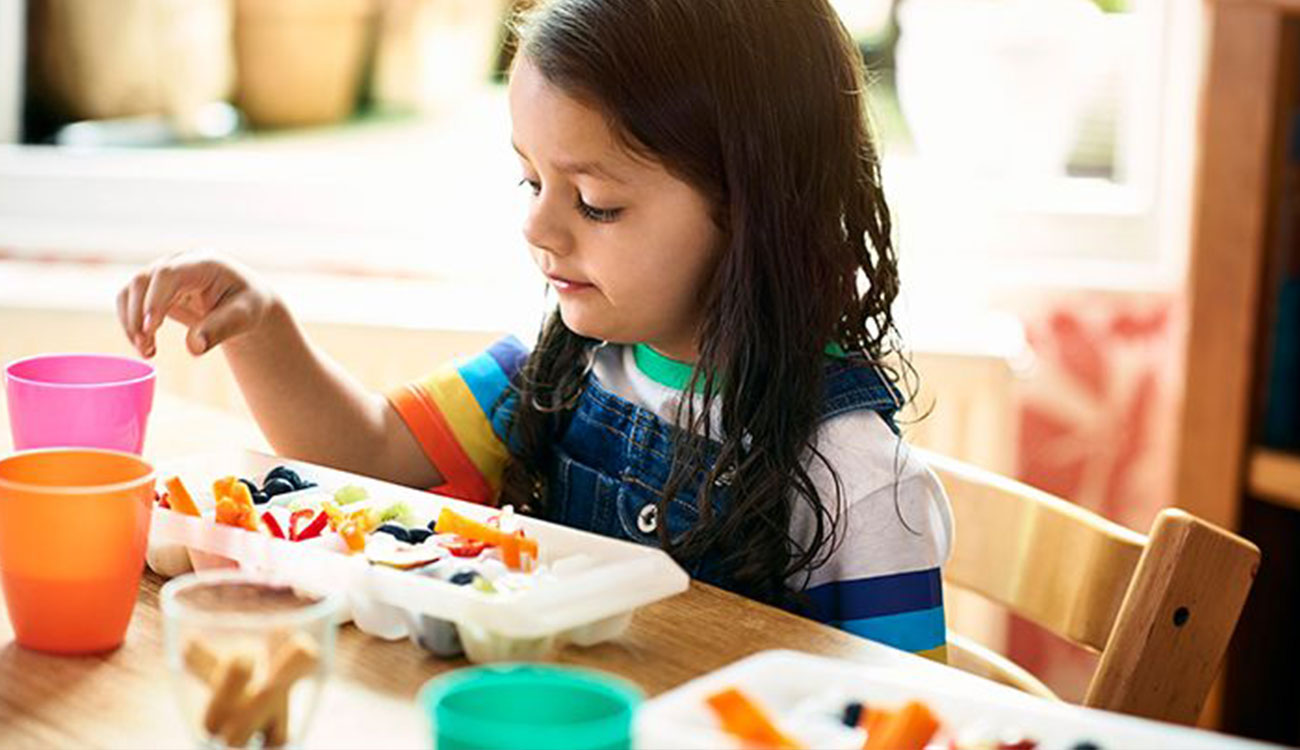

These delicious and healthy snack ideas are so good, you may want to make some extra for yourself!Getty Images
Every parent knows just how ravenous their kids can be when they come home from school. But before you reach for yet another plate of cheese and crackers, consider changing up the menu.
Varying your child’s after-school snacks can help prevent snack fatigue and add some nutritional value and variety to their diet.
“Snacks give you sustained energy throughout the day and help regulate your appetite,” says Annie Paquette, RD, a pediatric nutritionist at Floating Hospital for Children at Tufts Medical Center, in Boston. They also help kids develop hunger and satiety cues and can help shore up a healthy diet, she says.
But just how big of a snack should you give your child — and what kind? Read on for answers to these and other snack-related questions.
The Great Snack Debate: Should Kids Eat Snacks After School?
First things first: Should you give kids snacks at all, or is that just a surefire way to ruin their appetite for dinner?
“Kids are growing, and they may have extra calorie needs from physical activity, whether it’s just playing tag outside or doing sports,” says Isabel Maples, RDN, a spokesperson for the Academy of Nutrition and Dietetics. Plus, she explains, their schedules can vary widely. For example, a child may eat lunch anywhere from 10:30 a.m. to noon at school, and depending on after-school activities or their family’s schedule, may not eat dinner until 7:30 p.m.
“Young children have less stomach capacity than adults, and recommended portion sizes are smaller,” says Paquette. They may need one or two snacks a day, while older children may only need one, unless they’re very physically active. She advises spacing snacks 1 to 2 hours before and after scheduled meals.
The key, says Maples, is to designate a set time for snacks and let your kids eat as much or as little as they want during that time frame, depending on how hungry they feel. As long as you don’t let them graze for hours or hand them a large box of crackers, your child will likely be hungry again come dinnertime.
Another important thing to remember about snacks: They can power the mind as well as the body, which is especially important for school-age kids as they tackle homework. “Snacks are extremely important in a child’s diet,” says Kristi King, MPH, RDN, a spokesperson for the Academy of Nutrition and Dietetics and a senior dietitian at Texas Children’s Hospital, in Houston.
“Food breaks down into glucose, which is the preferred source of fuel for the brain and muscles,” she says. “A snack can help them concentrate on schoolwork or fuel them for after-school activities.” Not only that, says King, but snacks are also a great way to make up for any deficits in a kid’s diet. So, for instance, if your child isn’t keen on drinking milk with dinner, a smoothie made with yogurt and fruit can be a great way to boost their dairy intake, says Maples.
How to Make Healthy After-School Snacks
Here are some other useful tips to remember as you plan your child’s after-school snacks.
Focus on whole foods. Whenever possible, pick fresh fruits and vegetables, lean meats and fish, whole grains, and other foods commonly found on the outer perimeter of the supermarket over processed snacks that are loaded with preservatives or added sugars, fats, or salt, says Yvette Penner, RD, a pediatric nutritionist at Floating Hospital for Children at Tufts Medical Center, in Boston. These foods contain calcium, potassium, vitamin D, fiber, and iron, says Paquette, and some people — adults and kids — don’t eat enough of these nutrients.
Pair protein with fiber. Combining a protein source and a fiber-rich carbohydrate can give your kids an energy boost while filling them up until dinnertime, says Penner. Some examples of great pairings: apple slices with nut butter, low-fat yogurt with berries, or hummus with baby carrots.
Cut back on added sugar. “Aim to eat fewer than 25 grams per day of added sugars, or about 6 teaspoons,” says King. Paquette notes that on average, kids in the U.S. consume too much sugar, which can contribute to obesity and other comorbidities, such as the development of diabetes or heart disease.
Try swapping sugar-sweetened beverages such as teas, punches, and soft drinks with whole fruit and, says Paquette, replacing pudding or sweetened yogurt with plain yogurt topped with fresh fruit.
Use natural foods as sweeteners. Some kids may gobble up vegetables happily, but if your child refuses to eat anything green, try sweetening up a green smoothie with some fruit. Kids might resist at first, but if you can get them to try it, they may realize that the fruit makes the smoothie flavorful and yummy, says Maples. Be patient and keep trying; it may take time, but eventually, your child may get on board with greens. To further encourage a love of green foods, you can blend some green grapes, oranges, pineapple chunks and spinach together to create a drink that looks like veggies but tastes like tropical fruit goodness.Involve your kids in snack time. Encouraging your child to choose and make their own snacks can help even the pickiest of eaters expand their repertoire. One idea: Make a list of healthy snack options, and put them on index cards, suggests Maples. “Scramble them if you want, and mix and match the cards,” says Maples. “Say to your child, ‘OK, let’s plan our snacks out for the week.’” This is a good way to help guide them as they make their own choices, she says.
Another great way to get kids involved: Give them ingredients to make their own trail mix, says Maples. Let them choose a cereal, add nuts (which, she notes, are high in fiber and protein), and even throw in a few raisins or chocolate chips. Similarly, you can let them whip up their own yogurt parfait by choosing the yogurt, fruit, nuts, and other ingredients.
Be flexible. Sometimes the best-laid schedules can fall apart. If you run into a situation where it’s close to dinnertime and your child is hungry but hasn’t had a chance to snack — because, say, a soccer match ran late — you can offer a small glass of milk or an apple, says Maples. Or make dinner a smaller meal, she suggests.Make moderation your guide. When it comes to snacks, follow the Goldilocks rule: not too big, not too little, just right.
“There’s the permissive, ‘Just go get yourself a snack,’ and then there’s that other end, where a parent says, ‘This has one gram of sugar in it. No way, we’re not doing that,” says Maples. “Somewhere in between is where you really need to land.”
Best Ideas for After-School Snacks
Try these ideas — or put your own spin on them — the next time your child gets the munchies after school.
- Cut-up veggie sticks (carrots, celery, bell peppers — whatever your kid likes) with dip, such as salsa, low-fat salad dressing, hummus, or nut butter
- Whole grain pita slices and hummus
- Plain Greek yogurt with fresh berries and chopped nuts
- Low-sodium turkey slices on whole grain bread or butter lettuce
- Roasted chickpeas
- Trail mix (nuts, dried fruit, whole grain pretzels, and low-sugar dry cereal)
- Sliced cheese (Cheddar, Swiss, provolone) or string cheese with pear or apple slices
- Ants on a log (celery sticks filled with almond or peanut butter, topped with raisins or dried cranberries, and sprinkled with chopped nuts such as pistachios)
- Baked tortilla chips with salsa
- Healthy pizza: naan, a tortilla, or half an English muffin topped with veggies or leftover chicken and sprinkled with cheese and then broiled till bubbly
- Healthy wrap: refried black beans on a corn tortilla with Cheddar cheese, zapped in the microwave for 30 to 60 seconds and served with salsa or guacamole

 Best After-School Snacks for Kids
Best After-School Snacks for Kids  Kids fashion trends summer 2019
Kids fashion trends summer 2019  6 Things I Learned On My Maternity Leave
6 Things I Learned On My Maternity Leave  When A Baby Shower Is More Than A Party
When A Baby Shower Is More Than A Party  15 Of the Best Short Boy Names
15 Of the Best Short Boy Names 



Recent Comments